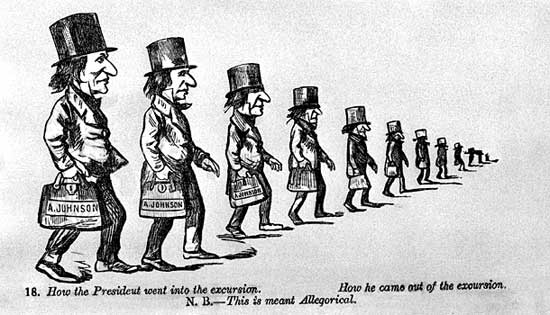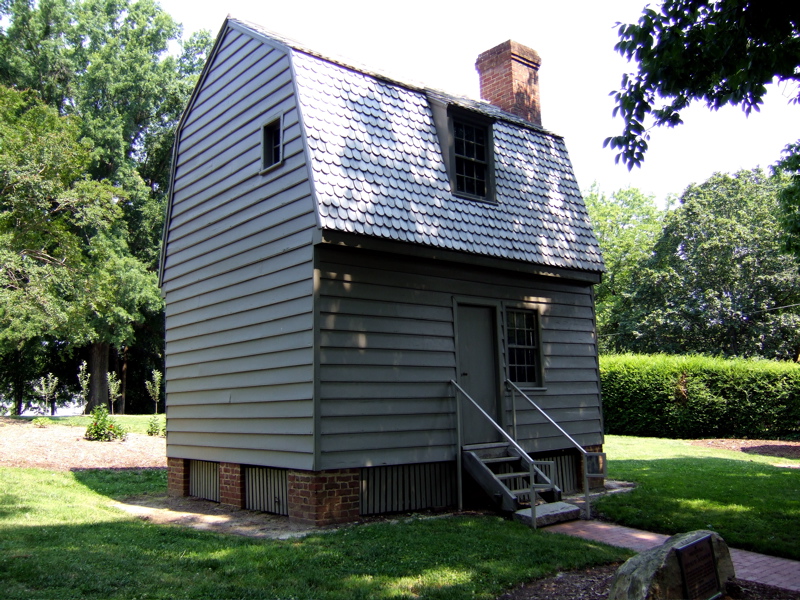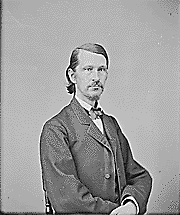|
Maynard, Ohio
Maynard is an unincorporated community located in western Colerain Township, Belmont County, Ohio, United States, along Wheeling Creek. It has a post office with the ZIP code 43937. Maynard is part of the Wheeling, WV-OH Metropolitan Statistical Area. The community is near Wheeling Township and its sister community of Blainesville. Maynard is a part of the St. Clairsville-Richland City School District. Name origin Maynard was named for Postmaster General Horace Maynard, who would serve under President Rutherford B. Hayes when the community would apply for its post office in 1880. While serving as a Representative from Tennessee, Maynard had visited the county seat St. Clairsville stumping on behalf of President Andrew Johnson and his policies while on the Swing Around the Circle campaign nearly fifteen years before the Post Office's naming. Until its postal application, the rail stop was called Henderson's Station after the Henderson family. Undoubtedly, Maynard would h ... [...More Info...] [...Related Items...] OR: [Wikipedia] [Google] [Baidu] |
United States Postmaster General
The United States Postmaster General (PMG) is the chief executive officer of the United States Postal Service (USPS). The PMG is responsible for managing and directing the day-to-day operations of the agency. The PMG is selected and appointed by the Board of Governors of the Postal Service, the members of which are appointed by the president of the United States, with the advice and consent of the United States Senate. The postmaster general then also sits on the board. The PMG does not serve at the pleasure of the president, and can be dismissed by the Board of Governors. The appointment of the postmaster general does not require Senate confirmation. The governors and the postmaster general elect the deputy postmaster general. The current officeholder is Louis DeJoy, who was appointed on June 16, 2020. History The office, in one form or another, dates from before the United States Constitution and the United States Declaration of Independence, having been based on the much ... [...More Info...] [...Related Items...] OR: [Wikipedia] [Google] [Baidu] |
Unincorporated Communities In Belmont County, Ohio
Unincorporated may refer to: * Unincorporated area, land not governed by a local municipality * Unincorporated entity, a type of organization * Unincorporated territories of the United States, territories under U.S. jurisdiction, to which Congress has determined that only select parts of the U.S. Constitution apply * Unincorporated association, also known as voluntary association, groups organized to accomplish a purpose * ''Unincorporated'' (album), a 2001 album by Earl Harvin Trio {{disambig ... [...More Info...] [...Related Items...] OR: [Wikipedia] [Google] [Baidu] |
Robert H
The name Robert is an ancient Germanic given name, from Proto-Germanic "fame" and "bright" (''Hrōþiberhtaz''). Compare Old Dutch ''Robrecht'' and Old High German ''Hrodebert'' (a compound of '' Hruod'' ( non, Hróðr) "fame, glory, honour, praise, renown" and '' berht'' "bright, light, shining"). It is the second most frequently used given name of ancient Germanic origin. It is also in use as a surname. Another commonly used form of the name is Rupert. After becoming widely used in Continental Europe it entered England in its Old French form ''Robert'', where an Old English cognate form (''Hrēodbēorht'', ''Hrodberht'', ''Hrēodbēorð'', ''Hrœdbœrð'', ''Hrœdberð'', ''Hrōðberχtŕ'') had existed before the Norman Conquest. The feminine version is Roberta. The Italian, Portuguese, and Spanish form is Roberto. Robert is also a common name in many Germanic languages, including English, German, Dutch, Norwegian, Swedish, Scots, Danish, and Icelandic. It c ... [...More Info...] [...Related Items...] OR: [Wikipedia] [Google] [Baidu] |
CL&W Subdivision
The CL&W Subdivision is a railroad line owned and operated by CSX Transportation in the U.S. state of Ohio. The line runs from a junction with the New Castle Subdivision at Sterling northwest to Lorain along a former Baltimore and Ohio Rail Road line (once the Cleveland, Lorain and Wheeling Railway). It junctions with the Cleveland Subdivision at Lester and the Greenwich Subdivision at Grafton. History Early history as an independent railroad The Lake Shore and Tuscarawas Valley Railway Company (LS&TV) was chartered by the state of Ohio on July 2, 1870. It was granted authority to build a line from Berea, Ohio, to Mill Township in Tuscarawas County, Ohio, where it would join the Pittsburgh, Cincinnati, Chicago and St. Louis Railroad line. A branch to Elyria, Ohio, was also authorized. In October 1872, the company purchased the long Elyria and Black River Railway Company (E&BR; chartered in 1871), which allowed for completion of the main line between Berea and Uhrichsville, ... [...More Info...] [...Related Items...] OR: [Wikipedia] [Google] [Baidu] |
Cleveland, Tuscarawas Valley And Wheeling Railway
Cleveland, Tuscarawas Valley and Wheeling Railway operated in eastern Ohio and West Virginia from 1875 to 1882. The Lakeshore and Tuscarawas Valley Railway Company organized by filing with the Ohio Secretary of State on July 2, 1870 to build a road from near Berea to Mill Township, Tuscarawas County, Ohio where it would interchange with the Pittsburgh, Cincinnati and St. Louis Railway, with a branch to Elyria. The road was completed in August 1873 from Elyria through Grafton, Massillon, and New Philadelphia to Uhrichsville. On October 30, 1872, the company purchased the Elyria and Black River Railroad forming a line from Uhrichsville to Lorain on Lake Erie. The Lakeshore and Tuscarawas Valley Railway Company filed a certificate March 3, 1873 to extend a line from Uhrichsville into Washington Township, Harrison County. Foreclosure was filed on the railroad July, 1874, for $2,180,000 debt, and it sold for one million dollars January 26, 1875, to a company that incorporated Fe ... [...More Info...] [...Related Items...] OR: [Wikipedia] [Google] [Baidu] |
Harrison County, Ohio
Harrison County is a county located in the U.S. state of Ohio. As of the 2020 census, the population was 14,483, making it the fifth-least populous county in Ohio. Its county seat is Cadiz. The county is named for General William Henry Harrison, who was later President of the United States. History Harrison County was formed from parts of Jefferson and Tuscarawas Counties in 1813. The county was named after General William Henry Harrison, the hero of the battle of Tippecanoe in the War of 1812 (and later to become the 9th US president). Oil was discovered near Jewett, Ohio in 1895, and then in the Scio, Ohio area in 1898. However, by 1901, the Scio oil boom had essentially ceased. Geography According to the U.S. Census Bureau, the county has a total area of , of which is land and (2.1%) is water. On May 16, 2013, the Chicago Tribune Business section reported that the Utica Shale underlying Harrison County shows promise as a tight oil production zone. To produce tig ... [...More Info...] [...Related Items...] OR: [Wikipedia] [Google] [Baidu] |
Ohio State Route 9
State Route 9 (SR 9) is a north–south route running through four counties in east central Ohio. Its route is long. The southern terminus is at SR 148 in Armstrongs Mills and the northern terminus is with US 62 north of Salem. Route description History *before 1931 – Route 9 ran from Cincinnati to Michigan.Route 9 (The Unofficial Ohio State Highways Web Site) by John Simpson This highway followed the current from the Ohio River at Cincinnati to just south of and f ... [...More Info...] [...Related Items...] OR: [Wikipedia] [Google] [Baidu] |
Swing Around The Circle
Swing Around the Circle is the nickname for a speaking campaign undertaken by President of the United States, United States President Andrew Johnson between August 27 and September 15, 1866, in which he tried to gain support for his mild Reconstruction era of the United States, Reconstruction policies and for his preferred candidates (mostly United States Democratic Party, Democrats) in the forthcoming United States House of Representatives elections, 1866, midterm Congressional elections. The tour's nickname came from the route that the campaign took: "Washington, D.C., to New York, west to Chicago, south to St. Louis, and east through the Ohio River valley back to the nation's capital". Johnson undertook the speaking tour in the face of increasing opposition in the Northern United States and in Washington to his lenient form of Reconstruction in the Southern United States, which had led the Southern states largely to revert to the social system that had predominated before the Am ... [...More Info...] [...Related Items...] OR: [Wikipedia] [Google] [Baidu] |
Andrew Johnson
Andrew Johnson (December 29, 1808July 31, 1875) was the 17th president of the United States, serving from 1865 to 1869. He assumed the presidency as he was vice president at the time of the assassination of Abraham Lincoln. Johnson was a Democrat who ran with Lincoln on the National Union ticket, coming to office as the Civil War concluded. He favored quick restoration of the seceded states to the Union without protection for the newly freed people who were formerly enslaved. This led to conflict with the Republican-dominated Congress, culminating in his impeachment by the House of Representatives in 1868. He was acquitted in the Senate by one vote. Johnson was born into poverty and never attended school. He was apprenticed as a tailor and worked in several frontier towns before settling in Greeneville, Tennessee. He served as alderman and mayor there before being elected to the Tennessee House of Representatives in 1835. After briefly serving in the Tennessee Sena ... [...More Info...] [...Related Items...] OR: [Wikipedia] [Google] [Baidu] |
United States House Of Representatives
The United States House of Representatives, often referred to as the House of Representatives, the U.S. House, or simply the House, is the lower chamber of the United States Congress, with the Senate being the upper chamber. Together they comprise the national bicameral legislature of the United States. The House's composition was established by Article One of the United States Constitution. The House is composed of representatives who, pursuant to the Uniform Congressional District Act, sit in single member congressional districts allocated to each state on a basis of population as measured by the United States Census, with each district having one representative, provided that each state is entitled to at least one. Since its inception in 1789, all representatives have been directly elected, although universal suffrage did not come to effect until after the passage of the 19th Amendment and the Civil Rights Movement. Since 1913, the number of voting representat ... [...More Info...] [...Related Items...] OR: [Wikipedia] [Google] [Baidu] |
Horace Maynard
Horace Maynard (August 30, 1814 – May 3, 1882) was an American educator, attorney, politician and diplomat active primarily in the second half of the 19th century. Initially elected to the House of Representatives from Tennessee's 2nd Congressional District for the term commencing on March 4, 1857, Maynard, an ardent Union supporter and abolitionist, became one of the few Southern congressmen to maintain his seat in the House during the Civil War. Toward the end of the war, Maynard served as Tennessee's attorney general under Governor Andrew Johnson, and later served as ambassador to the Ottoman Empire under President Ulysses S. Grant and Postmaster General under President Rutherford B. Hayes.Oliver P. Temple, Notable Men of Tennessee, From 1833 to 1875, Their Times and Their Contemporaries' (New York: Cosmopolitan Press, 1912), pp. 137-149. Maynard left his teaching position at East Tennessee College in the early 1840s to pursue a career in law, and quickly developed a re ... [...More Info...] [...Related Items...] OR: [Wikipedia] [Google] [Baidu] |



